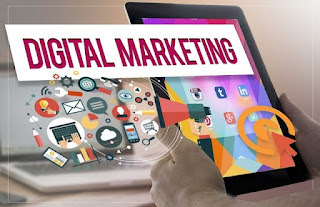That means it’s more important for brands to be transparent and think about their messaging and research or tweak their strategy in the coming year. It also means that marketers need to know the trends coming down the line so they can plan and take advantage of any new developments.
Read on to find out the 2023 trends forWithin social media and influencer marketing we look at TikTok and business, the rise of creators, and also of SuperApps.
In B2B marketing we hear about the value of video content, how to conquer social selling, and curated content.
Content marketing looks set to see more connections, creator + brand partnerships, and the evergreen needs to create valuable content.
You'll hear a lot about marketing automation in 2023, not least in available tools and the much-anticipated GPT-4.
Martech is also set to keep growing, and CRO will take a further lead. And the metaverse will not be going away.
1. SOCIAL MEDIA AND INFLUENCER MARKETING TRENDS
There are some really interesting trends down the line in 2023 for social media. In fact, it’s an area of marketing that will see significant change and brands need to keep up to have a presence and use the platforms effectively.
There are some really interesting trends down the line in 2023 for social media. In fact, it’s an area of marketing that will see significant change and brands need to keep up to have a presence and use the platforms effectively.
TikTok continues to evolve and dominate
TikTok has become a big player in the social media marketing realm. And that’s not set to change in 2023. TikTok generated $4.6 billion in 2021, a 142 percent increase year-on-year with 1.8 billion monthly active users predicted by the end of 2022 reported The Business of Apps.
It’s not just for consumers or creators that TikTok is making inroads. The platform is focusing on usability for businesses and improving targeting options for advertising which will make it a bigger and better platform for brands in 2023.
“One of the things that we're gonna see from TikTok next year is the simplicity around business tools. They've already been making waves in improving the usability for businesses around their ads dashboard. I've been looking at some of the new targeting options they've launched for their ads, which are brilliant,” says Alison Battisby, a social media consultant with Avocado Social.
Decentralizing social media to create a ‘super app’
The changes at Twitter have shone a lens on the vulnerability of social media platforms. Customers are moving away from wanting to engage with billionaire-led platforms and instead have control over their content and data.
Battisby thinks that “we are moving towards a need for the decentralization of social networks. Some of the new and exciting platforms that we're seeing include Mastodon, which is seeing a huge amount of downloads over the last couple of weeks. And it’s an interesting tool because it is built by the masses.”
Other apps are in the works like BlueSky, which is being developed by Twitter’s ex-CEO, Jack Dorsey. More an infrastructure than a platform, the company describes it as “a new foundation for social networking which gives creators independence from platforms, developers the freedom to build, and users a choice in their experience."
The ‘creator economy’ will grow and change
As brand awareness becomes more of a focus on social media (as opposed to pure lead generation), marketers need to find creators that have a voice and fan base (small or otherwise).
It can be a challenge for brands to create content that engages customers in a time-starved world. That’s where content creators come in and that doesn’t mean high-level influencers. It can mean employees, customers, or even subject matter experts in a niche area.
“Since COVID we've seen a new social media culture that focuses not on the number of followers, but on the content itself, in this era of what they're calling ‘recommended media’. I believe this pushes brands even more to work with influencers and content creators,” says Neal Schaffer, social media leader, and author.
The emergence of content creator funds on TikTok, YouTube, and Twitch means there’s an incentive for creators to put time into creating content a brand could take advantage of.
2. B2B MARKETING TRENDS
B2B marketing can be seen as boring or at least less exciting than its B2C counterparts. But that need not be the case. As a B2B company, it’s important to be creative in your marketing and use the channels and tools available to be memorable.
Video, video, and more video
As marketers, we all know the power of a great video campaign as a way to inform and connect. After all, 86 percent of businesses use video as a marketing tool, and 92 percent value it as an important part of their strategy (according to Wyzowl research).
The same research showed the variety of reasons businesses use video with the top being explainers followed by social media videos and presentations. The top three channels companies use are YouTube, LinkedIn, and Instagram.
For B2B companies, video can play an important role in the sales and marketing cycle. This is particularly true on LinkedIn as the video has become more popular on the platform and offers a way to connect with and influence customers.
“LinkedIn has become a place where people can quickly create user-generated content. People do it to varying degrees of slickness. Your mileage will vary depending on your style and budget. But I think it's added a lot of personality to that platform, and it's made the content more shareable. (Video) is a great way for you to act like a maven, like a connector,” says Stephen Walsh, co-founder of Kineo and Anders Pink.
Social media is an effective way for brands and their sales team to connect with customers. This is particularly true for B2B companies that have longer sales cycles and rely on digital channels to provide useful and relevant information.
But there’s a difference between posting content that pushes a sales message and using content to engage and create connections. Social transformation expert and author, Julie Atherton believes that’s what will drive success for businesses in 2023.
“I think there will be a clear demarcation between businesses that empower and support their teams to use social media effectively in relationship-building and those who see social as another channel to push sales messaging through,” says Atherton. “Some organizations are fearful of giving control, or allowing individuals to get their personality out there.”
An appetite for curated content
While companies put a huge focus on creating original content, it can also be effective to share curated content.
If the content is relevant, it can drive conversations and demonstrate that your company is interested in solving an issue or sharing information rather than just selling.
“If you're reaching out with something informative and insightful, it doesn’t matter too much whether you've created that content. I think (curated content) can be an efficient way to provide some learning and insight, and show that you're a trusted person who can add value. As a B2B strategy, it can be very powerful,” says Walsh.
Types of useful content you can share include: Industry news
Third-party research
Press releases or announcements
Interviews (video and blogs)
In-depth features
Podcasts
3. CONTENT MARKETING TRENDS
The Content Marketing Institute found that while 78 percent of marketers have a strategic approach to managing content, only over half have a documented content strategy in place to reference. That’s a mistake in today’s content-hungry society.
Use content to drive connections
We know as marketers that content can be used at all stages of the marketing and sales funnel to provide information and solutions. But content can do more than that.
In 2023, you should use content to make connections and build communities. As customers become more interested in the value and ethos of brands, it will be companies that foster and seek out connections that will succeed.
“While social media and email marketing still have their place, for me, it's communities that are driving the majority of my sales. People are seeking community. They want to reach out and get support from other humans,” says Kate Toon, founder of Stay Tooned.
“And it’s really important that the leader of those communities needs to be on the same page. People want to feel like they are buying from (companies with) similar values that align with their own.”
Refine and define creator/brand partnerships
There’s a lot of noise online, which equals a lot of content. Some of the content out there is great, but a lot is aligned with the wrong influencer or not targeted at the right audience. That’s where a good content creator/brand partnership can come into play.
Many creators want to grow and expand in 2023. This means they are looking for brand partnerships (rather than just sponsorships) that align with their content so posts feel natural and companies offer guidance and support, not just leave them to it!
For many creators it’s not primarily about the money, other aspects matter too as shown by Deloitte research.
Balance your content to offer value and not just sell
Over half of marketers cite a large increase in the demand for content according to marq’s ‘Content Effectiveness’ report in recent years. But it’s not just about having more content, it’s about having content that provides value to prospects and customers.
“I think you have to create your own content and have your own voice. But you can balance your content marketing budget with more curated content than people realize,” says Stephen Walsh.
“It shows that you're tapped into the world and "our ideas are the only ones," or "it always has to be something coming from us," that you're connected, and paying attention to trends. That sends a good signal to buyers that you're part of a community, and it's not just always me, me, me,” concludes Walsh.
4. MARKETING AUTOMATION TRENDS
As companies collect more data and need to execute more tasks to implement effective marketing campaigns, automation tools offer a way to automate routine and repetitive tasks at scale.
A shift to signal-based marketing
In 2023, there’s going to be a shift in mindset from technical-based marketing to anticipation marketing. This will enable marketers to anticipate what customers want and then feed it into automation processes.
This new mindset will now only make things more efficient but will enable personalization. This applies to platforms like Google Ads and also seems to be where Facebook and other social channels are heading.
“In digital marketing we’ve been collecting data, observing behaviors, and now what we're looking for are signals. They might sound like the same thing, but they're slightly different. Behaviors reflect interests, whereas signals are where the audience is kind of telling you what they want,” says Cathal Melinn, PPC and eCommerce specialist.
Importance of automation tools
Gartner predicts that by 2024, organizations with IT teams that understand the needs of customers will outperform other organizations’ customer experience metrics by 20 percent.
This understanding will rely on automation tools for internal processes and to enhance customer experience. These include marketing tools for CRM, social media, advertising, lead management or email.
“(One trend for 2023) is the increasing use of tools for automation and personalization at scale. Doing that is difficult unless you understand the data you have, put that data into a tool, and use that to automate your communications to consumers. This could be automating things like ‘the next best action’ based on what customers have done in the past and what they might do next,” says Ken Fitzpatrick, CEO of the Digital Marketing Institute.
Artificial Intelligence and the launch of GPT-4
You may not have heard of GPT-4 (Generative Pre-trained Transformer 4) but it's a cutting-edge tool that can help marketers automate many tasks.
Developed by OpenAI it is a text-generation deep learning model that is trained through content available online. It’s used for questions and answers, text summarization, machine translation, classification, code generation, and conversation AI.
According to Clark Boyd, a Digital Strategy Consultant it could open up new opportunities for marketers. “We're going to start seeing specific business applications (with GPT-4). There's a lot of funding going into startups at the minute that is trying to build, for example, social media content generation tools. So, you could just put in a bit of information about your brand, and these tools would come up with 50 ideas for your content, and you just drag and drop the ones you're most interested in.”
You can listen to our podcast on ‘The Art of Copywriting’ to find out more about the impact of AI on content marketing.
5. MARTECH TRENDS 2023
Marketing technology - Martech - software is used to create, execute, manage, and measure the performance of content (online and offline), campaigns and experiences. It’s an effective way to streamline customer journeys and implement omnichannel marketing campaigns.
Martech spending will keep growing
Martech spending in the U.S. will pass $20 billion in 2022 for the first time, up 15 percent year-on-year according to eMarketer. This spending is due to companies investing in technology that will enable them to gather and store data, use this data to make decisions, and implement those decisions.
Interestingly, B2B companies account for more than 30 percent of that spend, and this share is expected to grow moderately over the next couple of years to $8.5 billion in 2024.
“It's so hard to keep up with the Martech industry. What we're continuing to see is, we work with a platform, we learn something, we find that there's a gap, and then the next year, or six months down the road, there's a new technology platform that fills whatever that gap is. We know that it's massive,” says Chris Coomer from Neil Patel Accel.
CRO will no longer be about experimenting
Every company wants to improve its conversion rates online. This means more traffic, more sales, and more revenue right?
Up to now, many marketers have experimented with conversion rate optimization (CRO) and used many methods of testing. However, Chris Coomer believes this era of just seeing what happens is coming to an end as it’s not just about chasing the result.
“I think CRO has been viewed in a silo. It's been how we get from A to B. I think everybody's starting to look more holistically and clients are getting more intelligent with what they want to see,” he says.
“(As an agency) we'll do something, we'll get a better conversion rate, but how does that impact the client’s bottom line? How does that impact user experience? The questions being asked are forcing us to migrate into that larger viewpoint.”
Metaverse growth is slow but brands will still play
The metaverse caused a stir in 2022 and will continue to in the coming years, but growth has been slower than expected as profits plummet and costs mount.
Despite this, Alison Battisby believes brands will start to think about what their strategy is for this new era of immersive virtual communication world in 2023.
“One of the biggest telltale signs (of a new chapter in social technology) is Meta's commitment to the metaverse, and how they are going full guns blazing towards building these virtual domains and existences. It’s gonna take years to change people's behaviors and get used to this new offering but that doesn't mean we're not going to see some interesting innovation in the space.”
“Nike recently announced that they are going to allow people to design their own trainers, and sell those or wear them in the metaverse. I think next year we'll see a lot of big brands make a commitment towards the metaverse,” concludes Battisby.
2023 is going to be an exciting and challenging year for marketers! External circumstances mean that brands need to think carefully about their messaging to engage their audiences and align with creators and influencers that have the same values.
These developments show the constant evolution of marketing both in terms of technology and strategies. Check out ‘The Next Big Digital Marketing Trends in 2022’ blog to see what we predicted for this year.
You have time to think about which trends matter to you and what ones you can take advantage of in 2023. Happy planning!
If you need more insights into 2023 digital marketing trends, check out our fantastic webinar on 2023 Trends.
Digital Marketing Experts







 SEO
SEO






0 Σχόλια